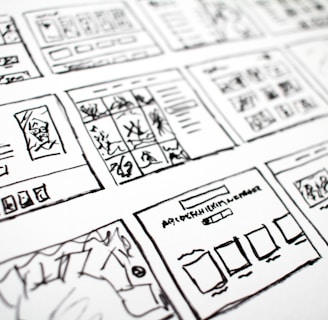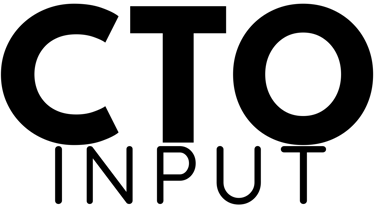The Retail Tech Playbook 2025: Strategy Moves That Matter (and the Ones That Don’t)
If you’re a CEO searching for “retail technology strategy examples for 2025,” this article lays out what real transformation looks like in today’s fast-moving retail landscape. We explore strategic moves that mid-market leaders are using to drive growth and loyalty—and how to build a tech strategy that creates business momentum, not just digital noise.


The Retail Tech Playbook 2025: Strategy Moves That Matter (and the Ones That Don’t)
If you’re leading a mid-sized retail or e-commerce business in 2025, chances are you’re not asking if technology should be part of your growth strategy. You’re asking how to make it actually work. You’ve already seen the hype cycles come and go. You’ve been pitched on everything from AI-powered merchandising to blockchain-backed loyalty programs. You’ve probably even funded a few experiments of your own.
But somewhere between the technology stack and the boardroom slide deck, there’s still a gap. The vision’s ambitious. The potential is massive. But the actual outcomes? Often scattered. Conflicting. Hard to measure.
That’s why you searched “Retail technology strategy examples for 2025.” Because you’re not looking for inspiration. You’re looking for traction.
You want to know what’s actually working—what strategic moves are helping real companies get ahead without drowning in complexity. You want to see through the noise and build something that fits your business, your customers, and your goals.
Let’s cut to the core of what retail tech strategy should actually look like in 2025—and how to avoid getting caught in shiny-object paralysis.
Why Most Tech Strategies Fail (Even When the Tools Are Good)
The failure usually isn’t technical. It’s operational.
Many mid-market retailers make the mistake of thinking a tool is a strategy. They sign deals with vendors, spin up new platforms, and expect innovation to follow. But technology, no matter how powerful, doesn’t drive results on its own.
You need sequencing. You need focus. You need a clear sense of what the business is trying to become—and what capabilities are missing to make that happen.
Tech isn’t the strategy. It’s how you deliver the strategy. And if your business goals and your tech stack are evolving on separate tracks, you’ll burn cash and confuse your team before you see meaningful impact.
That’s why most of the smartest retail leaders in 2025 aren’t chasing more tools. They’re chasing tighter alignment.
The 2025 Shift: From Tools to Outcomes
The game has changed. In the past, retailers adopted technology to gain efficiency. Today, they adopt it to gain agility.
The winners in 2025 aren’t the ones with the most sophisticated platform. They’re the ones who can move fastest when the customer changes, the supply chain flexes, or the category shifts direction.
So what does that actually look like? What are forward-thinking CEOs doing right now to position themselves for resilience and growth?
They’re not overhauling everything. They’re building from a place of clarity. They’re tightening the connection between customer behavior and back-end decision making. They’re linking online and offline not just through unified commerce, but through unified intelligence. They’re picking their moments, choosing what to automate, what to personalize, and what to let go.
They’re thinking like operators, not just innovators.
Real-World Strategy Moves That Work in 2025
The most successful tech strategies right now aren’t coming from companies that bet everything on the latest tech trend. They’re coming from CEOs who know their business, understand where leverage lives, and invest in the capabilities that will matter most in the next 18 months—not just the next demo.
One brand integrated real-time in-store inventory with their e-commerce platform—not to impress investors, but because they were tired of customer complaints about items shown online but missing in stores.
Another stopped spending on third-party loyalty apps and built their own low-friction, in-house rewards system that allowed store teams to actually recognize returning customers by name, in real time.
A third company realized that while their tech stack looked modern, no one could answer the question “What’s driving revenue growth this week?” So they replaced three dashboards with one single daily report tied directly to their three strategic outcomes: new customer acquisition, conversion, and basket expansion.
These moves weren’t flashy. But they were focused. And they worked.
The Strategic Questions That Matter in 2025
In a world full of tools, your edge is your clarity.
The smartest CEOs are asking sharper questions:
Where does our tech stack slow us down or muddy decisions?
What data do we have—but aren’t using?
Where do our people spend time compensating for bad systems?
Are our customers getting a coherent brand experience—or a fragmented one?
These questions aren’t solved by buying software. They’re solved by designing smarter systems that reflect what your business needs to perform at its best—and building a culture that knows how to use them.
The Future of Retail Isn’t Just Digital. It’s Coherent.
Retail isn’t going fully digital. And physical retail isn’t going away. The winning brands in 2025 are those that understand how digital enhances every part of the business—not just the website or app.
It’s about making the store experience more intelligent. The staff more informed. The operations more adaptive. The marketing more responsive.
Technology should tie it all together. But it only will if your strategy is built to prioritize coherence, not complexity.
Don’t Just Build a Stack. Build a System.
You don’t need to be the most innovative brand. You need to be the most in sync.
That means your retail tech strategy should start with your business strategy. What’s your growth thesis? What customer behavior are you betting on? What operational strength do you want to double down on?
Once those answers are clear, technology becomes a multiplier. But only then.
At CTO Input, we don’t push tools. We help mid-market retailers build tailored, outcome-driven technology strategies that are actually executable—because they’re designed around your business, not someone else’s buzzwords.
If You’re Planning for 2025 and Want to Make It Count
If you’re ready to stop guessing and start building a tech strategy that creates real-world traction, not just digital clutter, we should talk.
📧 Reach out at info@ctoinput.com
📞 Or schedule a no-pressure call at https://ctoinput.com/connect
🌐 Visit https://ctoinput.com to learn more
You don’t need a roadmap full of jargon. You need one built on truth. Let’s create the strategy that helps you lead, not chase.
